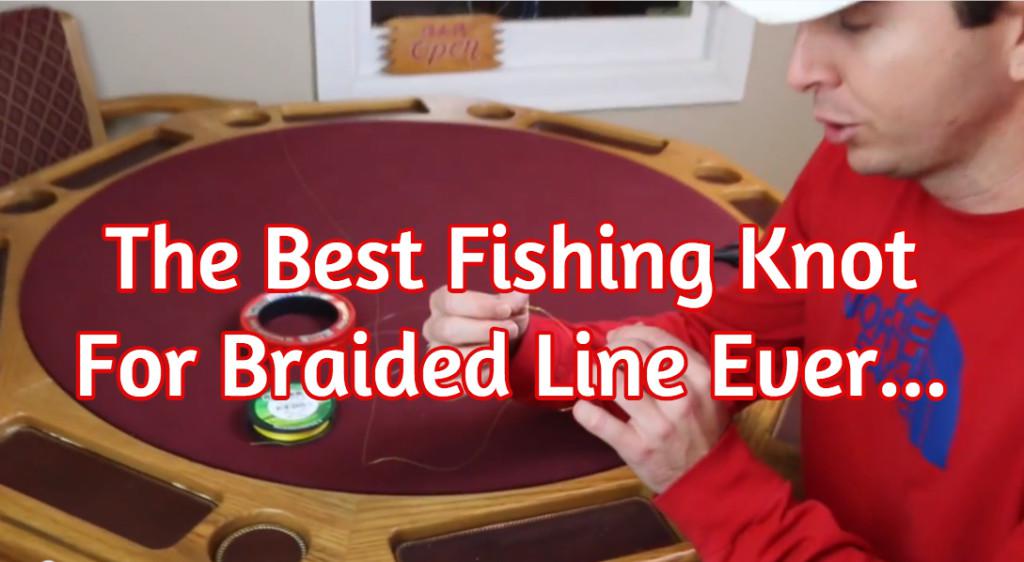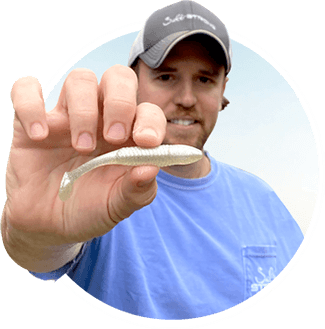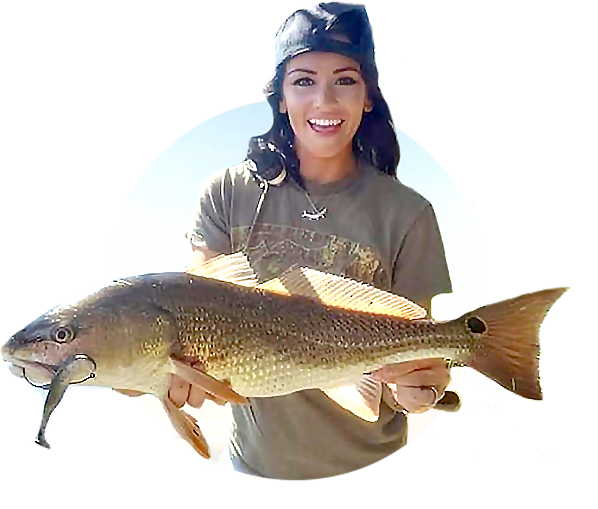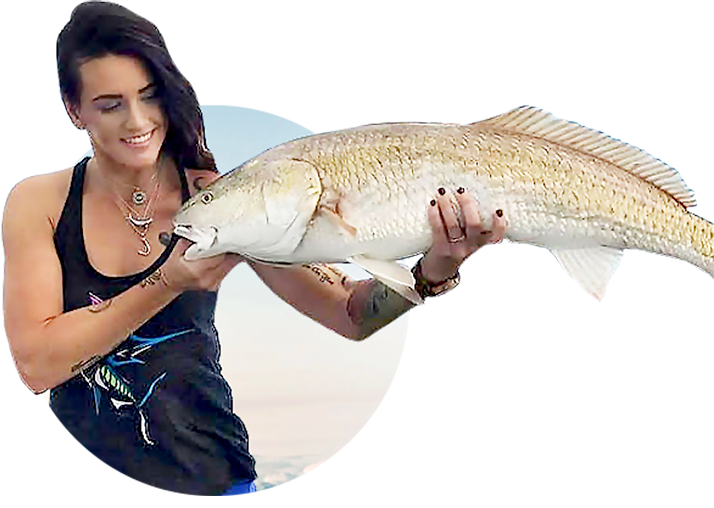Best Fishing Knot for Braided Line [Braid to Leader Contest]
- By: Luke Simonds
- on
- Found In: Braid Knots, Braid to Leader, Fishing Knots, Fishing Tips, Knot Contest, Knots, Line to Leader-Braid

Of all the many variables involved with landing the biggest fish of the day, the fishing knots we tie are the only ones we have absolutely 100% control over, so it’s on us to make time to learn the best fishing knot for all of the needed connections.
To help the Salt Strong community always feel confident in knots while pursuing the biggest, baddest, and saltiest fish in the sea, we decided to start this head-to-head tournament style contest where the most popular knots are put against each other so that we can determine which knot is truly the best-of-the-best for those of us who use braided line fishing line.
We specified this analysis towards braided line because it is the best option for inshore anglers who need to make long casts while still having the strength needed to bring in the big ones.
So let’s dive in to the results of this testing of the best fishing knot for braided line when tying directly to a fluorcarbon leader.
Braid to Leader Knot Contest
Of all the knot connections, this is by far the most important to master because it will almost always be the weakest link in your system due to the fact that you’re using the lightest/thinnest line possible (light braid) to maximize casting range while beefing up the leader material to be able to handle the line shearing jaws of the biggest, baddest, and saltiest of predators you come across out on the water.
Here are the knots that we used in this analysis:
- Improved Albright Knot
- FG Knot (WINNER)
- Slim Beauty
- Double-Double Uni
FG Knot – The Winner of the Contest
The ‘FG Knot’ completely surprised me. When seeing that the leader line didn’t even bend back as all other knots do, I thought that it wouldn’t stand a chance at even being considered for this contest. However, my feelings about it quickly changed after tying it for the first time and watching it beat my most trusted and dependable knot (which was until then undefeated). Considering how small it is along with how easy it is to tie (if using a trick I just found), this is a must-know knot for anyone who uses braided line.
Here’s a video showing the shortcut method to tie this awesome knot:
Improved Albright Knot
The ‘Improved Albright’ knot is very popular on the online forums. I found that it was easy to learn and tie, which likely explains its popularity. In testing different variations of it, I received the best results when using a full 15+ twists and having the main line and tag end on the same side of the leader loop (see 2:32 mark in video below).
Slim Beauty Knot
The ‘slim beauty knot’ was lower on my list for line to line knots. The fact that you have to thread the braid through two very small holes in the leader’s tightened granny knot makes this one very tough to tie in low light conditions, and the strength of it was not quite as high as the others as well. That being said, I found that the strongest way to tie it was in doing 8 wraps up the main line, and then only 4 in the second round going back over the first towards the connection (compared to the 7 and 7 combo that most people seem to use).
Given its performance and relative difficulty to tie, I recommend not using this one so did not include a how-to video.
Double-Double Uni Knot
The ‘double uni knot’ is a common knot that many people trust for their line to line connections. Basically, the double simply signifies that you’re tying a uni knot twice… one at the end of the main line, and another at the end of your leader. In testing with braid to fluoro connections, I found that tying the braid side with a doubled over line increases it strength… which is why I’m refering to this version as the “double-double uni knot”. The video below shows how to tie them both, and it even shows what happens when you test their strengths against one another… spoiler alert – the double-double wins every time!
CONCLUSION
As you see in the diagram below, the FG knot won handily with an average break strength of 20 to 23 lbs… extremely impressive given that the weak line in the connection was only rated at 10 lbs. Needless to say, the FG Knot is a MUST-KNOW for anglers who use braided line.

This diagram shows the head to head matches that took place as part of this analysis. The test consisted on 3 rounds… 3rd round was the winning knot tied against itself to test its strength. The red values below the names of the knots represents the amount of pull strength that the knots where able to withstand in each round. Lines used were 10 lb PowerPro braid and 30 lb Ande Fluorocarbon.
This knot testing is continuous… we’re always seeking out better styles/methods, and we’ll of course update this page as new/better knots come to light.
If you have a great line-to-line knot that is not included here, please leave a comment below about it. We’ll include it in our testing and let you know how it compares to the others.
Note: I sure wish that I would have started testing lines sooner because it was extremely surprising to see my most trusted knots from before proving to be weaker than other knots that I simply never bothered trying.
If you want to skip doing the testing yourself, then click the link below to see the full ranking list of knots that I’ve tested out so far.
Go To Our Knot Testing Homepage [Full Knot Rankings]
Related categories:
STOP WASTING TIME ON THE WATER!
Do what the “SMART ANGLERS” are doing and join the Insider Club.
Here’s what you’ll receive today when you join:
- Weekly fishing reports and TRENDS revealing exactly where you should fish every trip
- Weekly “spot dissection” videos that walk you through all the best spots in your area
- Exclusive fishing tips from the PROS you can’t find anywhere else
- Everything you need to start catching fish more consistently (regardless if you fish out of a boat, kayak, or land).










There is a knot you don’t discuss and that is a Bimini twist. It’s a little hard to do but it gives you a shock between like and your splice to your leader. It is the best knot specially when fighting bigger fish.
The bimini twist is technically just a knot that doubles over a single line. I did a test on it years ago and surprisingly found that it didn’t hold up to the FG knot except when the FG was used on the other end of the doubled line: https://www.saltstrong.com/articles/fg-knot-vs-bimini-twist-knot-strength-test/
Good morning and I just want to say thank you for the knot test. I have been having a hard time getting my knots to hold, now I know why. I will be practicing this technique with the FG knot. Really looks fairly simple. Thanks and tight lines!
I know its not popular especially with braid but I used the Seaguar knot with light line (8lb to 8lb) braid to flouro for everything fresh water. No one seems to test this knot. Its probably the easiest knot to tie. Also, while having a really nice small knot is nice its note terribly necessary if you use short leaders that you are not passing through the guide when you cast.
I would not recommend that knot with braid because it doesn’t provide enough surface area to make sure it won’t slip out.
what about 100 pound braid to 60 pound mono?
I’ve seen an Australian fellow (Ryan Moody) on Youtube that fishes very large reef species and he seems to like tying a bimini in the braid and then taking that double line and tying an albright knot. Look up “Easy and Quick Way to Join Main Line and Leader Without an FG Knot”. In hurry up scenario though, you can’t beat the 6 turn or “double” surgeons knot when seconds are ticking. I follow Luke’s advice and don’t try the FG when i’m even connecting 65 lb braid to 60 lb mono.
I got the FG. But when I threw my lures around 40 times. The knot got loose at braid cut. Then it opened . I lost my leader and lure.
Bummer! What lines were you using?
Any interest in testing the PR knot
I tested the PR knot out against the FG knot, and it won 2 out of 3 times. The breaking strength was very close while the amount of time/effort to tie the PR knot was significantly higher, so I don’t recommend the PR knot even though it was technically the victor.
Thanks! That FG knot is a game changer. I only wish I could use it to tie my shoes!
I’m glad to see that you’re enjoying the FG knot!
Test tackle advisors modified alberto knot
That version is not going to have a noticeable difference in breaking strength compared to the normal Alberto knot because it’s so similar.
And it definitely won’t be stronger than the FG knot because it proved to be 30% stronger in this test: https://www.saltstrong.com/articles/albright-vs-alberto-vs-fg-knot/
Is the FG equally effective for heavier 50lb braid to 80lb flouro or mono?
Yes… it’s great for all braid to fluoro/mono as long as the braid is weaker than the leader.
Thanks Luke
Why keep tying a new knot each time you change hooks, flies, etc. ?
Simply tie a double surgeon loop that is brought through the hook eye using an ‘open’ (dental) floss threader (cut threader, so you have two open ends) around the loop. A piece of thin mono or braid (nanofil, etc) would also do- just so it’s LIMP.
Now thread these two ends through the hook eye (or swivel eye).Set the threader piece aside and then go around the rest of the hook or swivel eye with the loop and pull tight.
Hint: hold the two floss threader ends so they aren’t quite even, so they go through the hook eye ONE AT A TIME.
Store this open piece of (dental ) floss threader (or line) on a ‘pinch’ of orthodontic wax on a place near you (like an arm of your chair or a railing on the boat).
This is all to:
>allow better action of the fly, lure.
>allow for delicate live action fly/lure situations, NOT line strength situations.
>allow you to stop tying all those knots.
My invention! Hope you will try it. Add it to your quiver of fishing tricks.